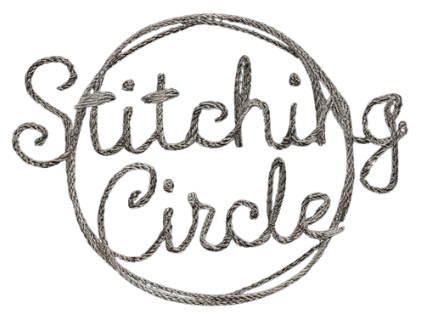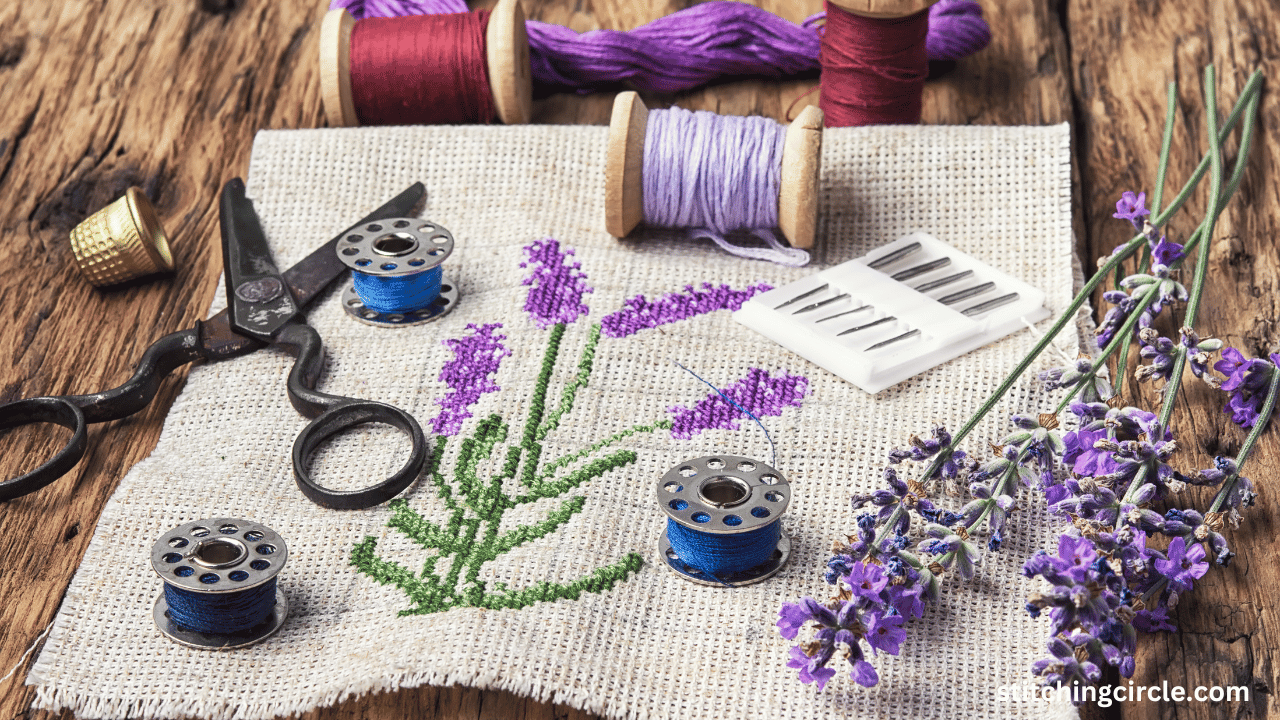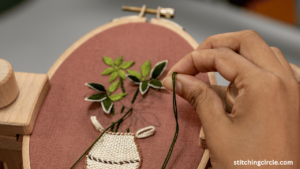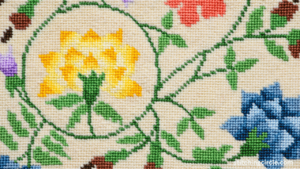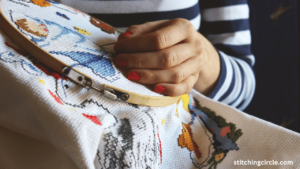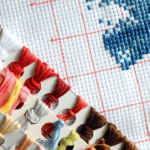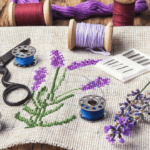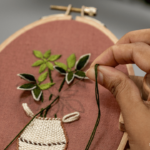One of the most lovely forms of handicraft is embroidery, which includes embellishing fabric with a needle and thread. It is possible that you will experience a sense of being overwhelmed by the vast number of stitches that are accessible to you if you are just beginning your adventure into embroidery.
Have no fear! In the following paragraphs, we will walk you through the alphabetical order of embroidery stitches, elaborating on each one in language that are straightforward and easy to comprehend.
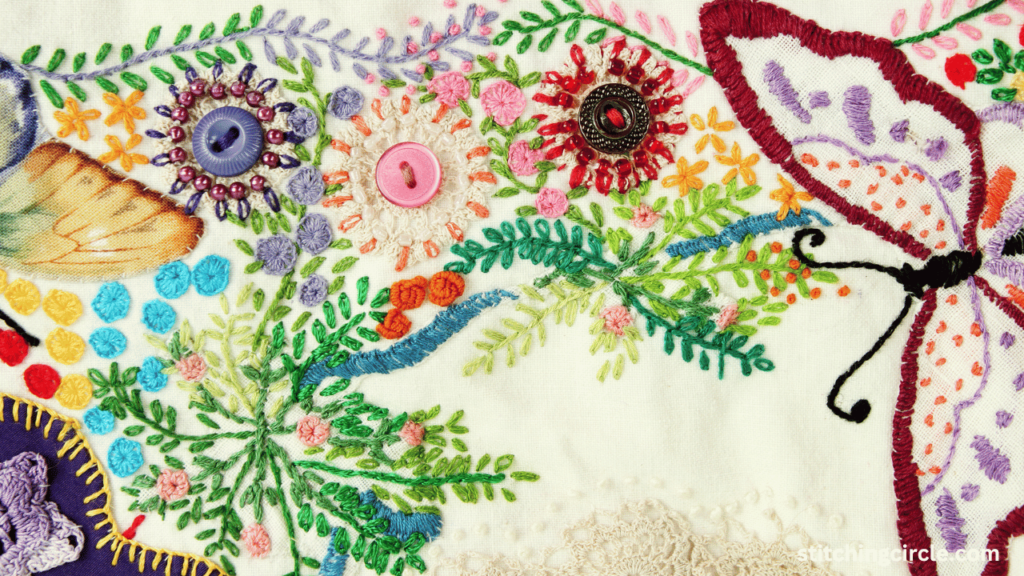
Contents
- 1 Backstitch
- 2 The running stitch
- 3 Stitching by Satin
- 4 A knot in French
- 5 Crochet in a chain
- 6 Stitching by Blanket
- 7 Stitching in a Cross
- 8 The Stem Stitch
- 9 The Bullion Knot
- 10 Lazy Daisy Stitch
- 11 Conclusion
- 12 FAQs
- 13 What are embroidery stitches?
- 14 How many types of embroidery stitches are there?
- 15 Which embroidery stitch is best for beginners?
- 16 What materials do I need for embroidery stitches?
- 17 Can I use embroidery stitches on different types of fabric?
- 18 How do I learn embroidery stitches?
- 19 Can I create my own embroidery designs using stitches?
- 20 How do I care for embroidered items?
Backstitch
To begin, let’s start with the backstitch, which is one of the most fundamental stitches. This stitch is wonderful for embellishing your embroidery with delicate details and for outlining your designs
Bringing the needle up through the fabric and then inserting it back down slightly ahead of where the thread emerged is all that is required. When you want to make a line of stitches that is continuous, repeat this method.
The running stitch
Following that comes the running stitch, which is yet another fundamental stitch used in embroidery. To create this stitch, you will need to make stitches that are straight and evenly spaced along a line. In addition to being an excellent tool for adding texture, it may also be utilized for outlining and filling certain designs.
Stitching by Satin
Try the satin stitch if you want a finish that is shiny and smooth. For filling up bigger parts of your embroidery with a bold and solid color, this stitch is an excellent choice. To totally cover the area you want to fill, you need only stitch back and forth across it until it is completely covered.
A knot in French
Utilizing the French knot is a simple way to incorporate texture into your embroidery. You can use this stitch to add details to your fabric, such as flower centers or eyes, because it allows you to create a raised dot on your cloth.
A French knot is created by first bringing the needle through the fabric and then wrapping the thread around the needle several times. After that, the needle is inserted back down close to where it emerged from the fabric.
Crochet in a chain
Chain stitches are extremely adaptable stitches that may be used for a variety of purposes, including outlining, filling, and creating texture.
A chain-like pattern is produced as a result of the creation of a sequence of loops. For the next stitch, simply bring the needle up through the cloth and then insert it back down into the same hole. This will allow you to create the next stitch by catching the loop of thread that is underneath.
Stitching by Blanket
In the event that you are seeking for a beautiful edge for your needlework, the blanket stitch is an excellent choice. The edge of your fabric will be reminiscent of a blanket thanks to this stitch, which generates a series of looped stitches along the edge of your cloth. When you want to add a decorative border to your design or finish off raw edges, this is an excellent tool to use.
Stitching in a Cross
One of the most common embroidery techniques is called cross stitch, and it consists of creating X-shaped stitches in order to create a pattern. The ability to use it on its own or in combination with other stitches to provide further detail makes it an excellent tool for the creation of elaborate designs.
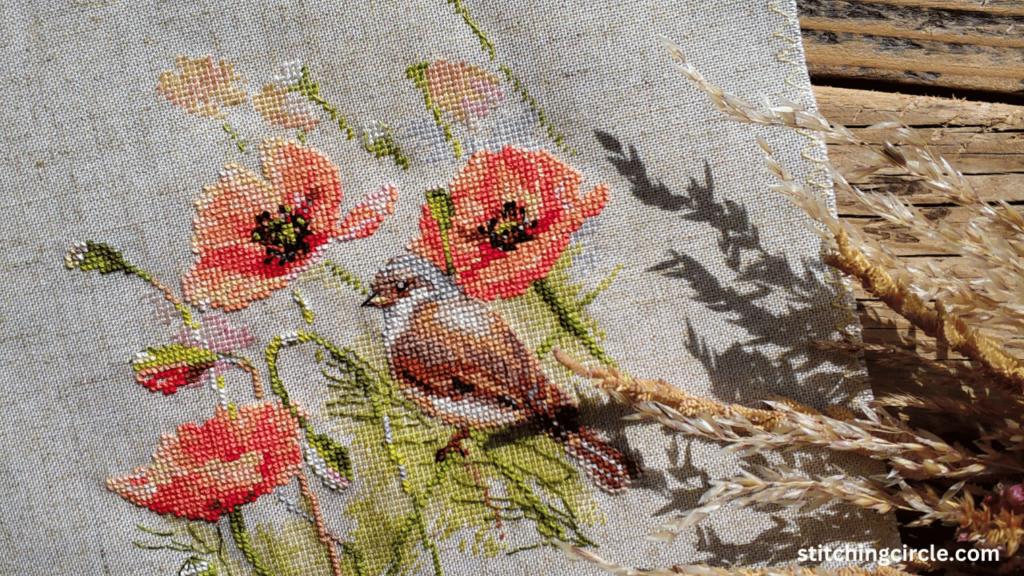
The Stem Stitch
Try out the stem stitch if you want to create a stitch that looks like a rope that has been twisted. Using this stitch, you can produce a smooth, curved line that is ideal for outlining shapes and adding detail to your embroidery.
Make sure that the thread is looped under the needle as you move through the cloth. Simply bring the needle up through the fabric and then insert it back down little ahead of where you started.
The Bullion Knot
The bullion knot is a flexible stitch that can be used to create textured lines and add dimension to your embroidery. The twisted knot effect is achieved by first looping the thread around the needle numerous times and then drawing it through the fabric, forming the knot.
Lazy Daisy Stitch
Let’s not forget about the lazy daisy stitch, which comes in last place. Due to the fact that it is reminiscent of the petals of a daisy, this stitch is ideal for the creation of more delicate floral designs. Simply construct a loop with your thread, and then use a little stitch to secure it in place. This will allow you to create each petal.
Embroidery is a pleasant skill that allows you to express your creativity and give your projects a more personal touch of your own being.
If you have these fundamental stitches in your arsenal, you will be well on your way to creating stunning works of art with nothing more than a needle and thread.
Conclusion
After becoming proficient in all of the embroidery stitches, you will have access to a vast array of creative opportunities. Experimenting with different stitches may give your designs more depth, texture, and personality.
Whether of whether you are just starting out or have years of experience in the embroidery needlework industry. Therefore, seize your needle and thread, and allow your imagination to run out of control!
FAQs
-
What are embroidery stitches?
Embroidery stitches are techniques used to create designs on fabric by sewing with a needle and thread. Each stitch has its own unique look and purpose, allowing you to add texture, detail, and depth to your embroidery projects.
-
How many types of embroidery stitches are there?
There are countless types of embroidery stitches, ranging from basic stitches like the backstitch and running stitch to more complex stitches like the satin stitch and bullion knot. Learning these stitches opens up a world of creative possibilities for your embroidery projects.
-
Which embroidery stitch is best for beginners?
For beginners, it’s best to start with simple stitches like the backstitch, running stitch, and satin stitch. These stitches are easy to learn and versatile, making them perfect for mastering the basics of embroidery.
-
What materials do I need for embroidery stitches?
To get started with embroidery stitches, you’ll need a few basic materials, including embroidery needles, embroidery floss or thread, embroidery hoops, and fabric. You can also use embroidery patterns to guide your stitching.
-
Can I use embroidery stitches on different types of fabric?
Yes, you can use embroidery stitches on a variety of fabrics, including cotton, linen, denim, and even felt. Just be sure to choose the appropriate needle and thread for the fabric you’re working with to ensure smooth stitching.
-
How do I learn embroidery stitches?
There are many resources available for learning embroidery stitches, including books, online tutorials, and classes. You can also practice by experimenting with different stitches on scrap fabric until you feel comfortable with them.
-
Can I create my own embroidery designs using stitches?
Absolutely! Once you’ve mastered the basic embroidery stitches, you can use them to create your own unique designs. Experiment with different stitch combinations, colors, and textures to bring your creative vision to life.
-
How do I care for embroidered items?
To care for embroidered items, gently hand wash them in lukewarm water with mild detergent, then lay them flat to dry. Avoid wringing or twisting the fabric, as this can distort the stitches.
